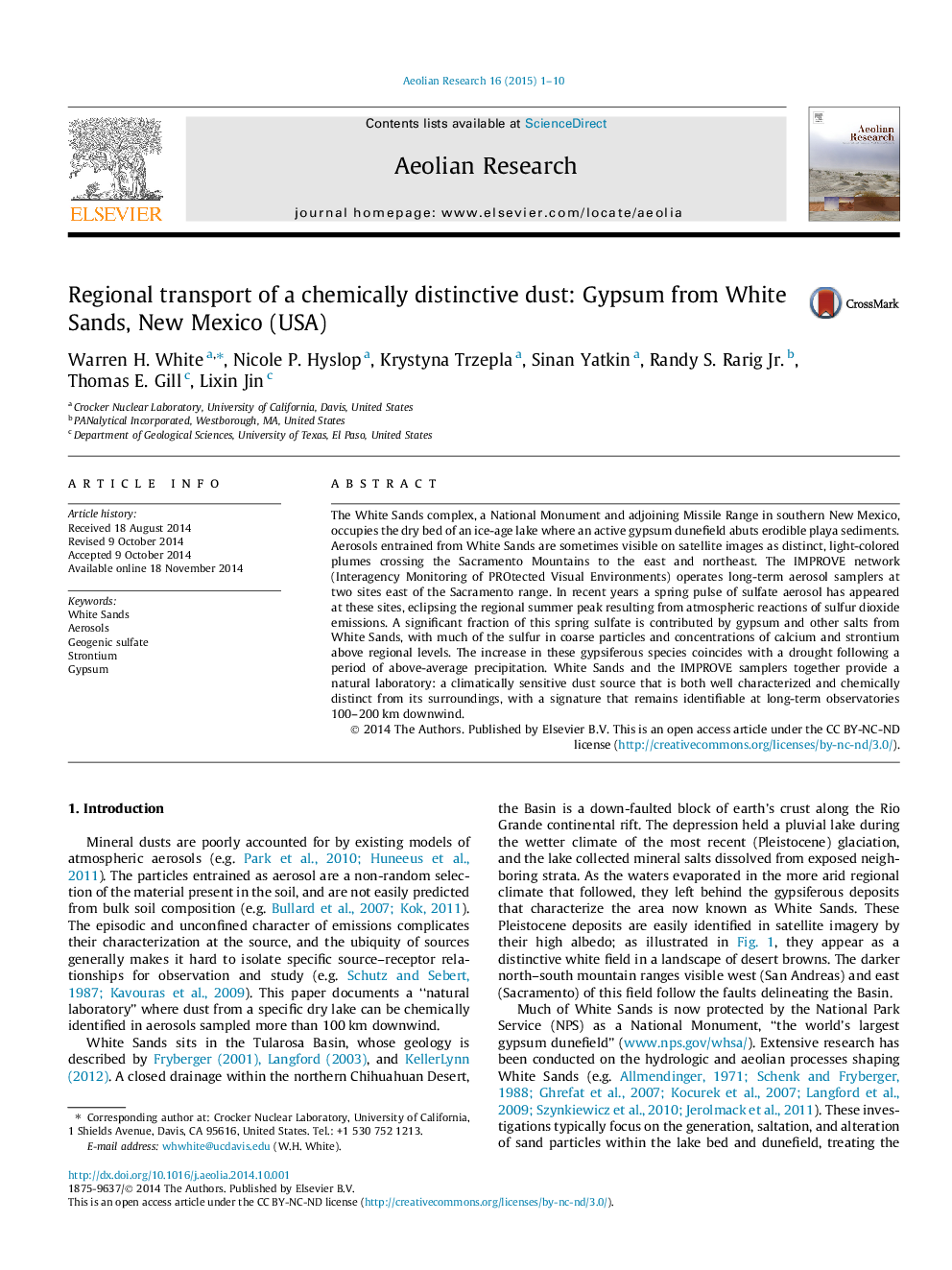| کد مقاله | کد نشریه | سال انتشار | مقاله انگلیسی | نسخه تمام متن |
|---|---|---|---|---|
| 6426312 | 1634111 | 2015 | 10 صفحه PDF | دانلود رایگان |
- White Sands, New Mexico, is a major regional source of springtime dust.
- Aerosols were monitored 100-200Â km downwind of White Sands from 2002 to 2013.
- White Sands dust is chemically identifiable downwind by its enrichment in Ca and Sr.
- Much of the downwind sulfate aerosol in recent springs has been of geogenic origin.
The White Sands complex, a National Monument and adjoining Missile Range in southern New Mexico, occupies the dry bed of an ice-age lake where an active gypsum dunefield abuts erodible playa sediments. Aerosols entrained from White Sands are sometimes visible on satellite images as distinct, light-colored plumes crossing the Sacramento Mountains to the east and northeast. The IMPROVE network (Interagency Monitoring of PROtected Visual Environments) operates long-term aerosol samplers at two sites east of the Sacramento range. In recent years a spring pulse of sulfate aerosol has appeared at these sites, eclipsing the regional summer peak resulting from atmospheric reactions of sulfur dioxide emissions. A significant fraction of this spring sulfate is contributed by gypsum and other salts from White Sands, with much of the sulfur in coarse particles and concentrations of calcium and strontium above regional levels. The increase in these gypsiferous species coincides with a drought following a period of above-average precipitation. White Sands and the IMPROVE samplers together provide a natural laboratory: a climatically sensitive dust source that is both well characterized and chemically distinct from its surroundings, with a signature that remains identifiable at long-term observatories 100-200Â km downwind.
Journal: Aeolian Research - Volume 16, March 2015, Pages 1-10
